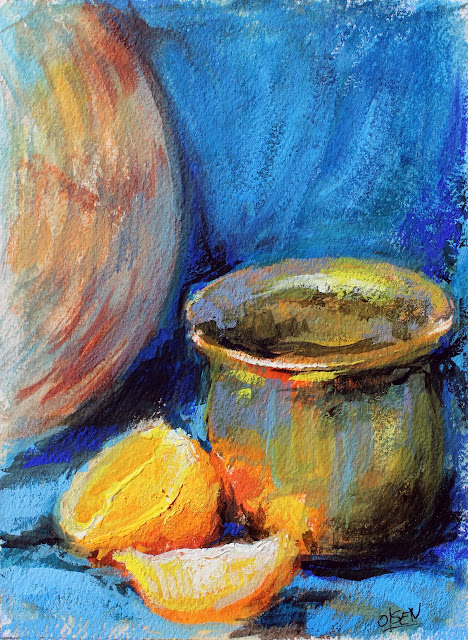Work will be shown and for sale in the exhibition!
"Small Wonders" is an annual tradition that reflects a variety of media and sculptures with a multitude of subject matter. All original artwork displayed will be smaller than 11x14 (including the frame) and available for sale. Each original is priced at $200.00 or less.
 |
| Blue & Orange. 5x7. Gouache on canvas by Christy Olsen. |
 |
| English Rose. 8x10. Oil on board by Christy Olsen. |
Charity Exhibition & Art Sale
This event is open to the genreal public. Admission is at no charge. All sale proceeds directly support the Drawing Studio and will benefit scholarships & summer programs for kids.
November 14 - 23, 2015
November 14, 2015 (6:00 p.m. - 9:00 p.m.)
Refreshments served.
The Drawing Studio (TDS) is a 501(c)(3) non-profit organization that enriches people's lives by providing artistic inspiration and studio art instruction for people at any age (from 9-90+) at any level of experience. For more information, visit The Drawing Studio TDS.org.
The exhibition will be shown in the gallery on the grounds of the Drawing Studio in Tucson, Arizona.

|
| The Drawing Studio School & Gallery |
The Drawing Studio, Inc.
2760 N Tucson Blvd, Tucson, AZ 85716
November 15th (12:00 p.m. - 4:00 p.m.)
November 16 - 20 Weekdays (9:00 a.m. - 4:00 p.m.)
November 21, 22, Saturday & Sunday (12:00 a.m. - 4:00 p.m.)
Daily (8:30 a.m. - 4:30 p.m.) or call for an appointment.
Artwork is "cash & carry," which means that if purchased, the piece may be taken home immediately so that clients will not have to wait until the show has ended. This an excellent opportunity to acquire that particular piece or find a unique holiday gift!
For Purchasing Information:
Phone +1 (480) 990-1422
The Event
Photo taken during the installation.

|
| Small Wonders Show at TDS Gallery |













